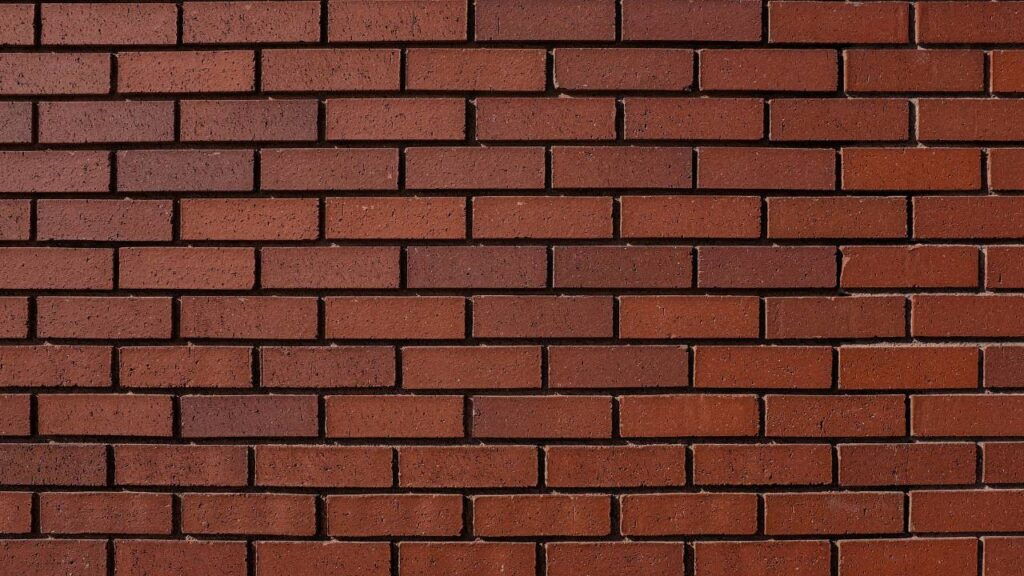Thinking about improving your home’s energy efficiency? External wall insulation might be the perfect solution for you. By insulating your external walls, you can significantly reduce heat loss and save on energy bills. This not only keeps your home warm and cosy but also contributes to a more sustainable living environment.
One major advantage of external wall insulation is the enhanced comfort inside your home. It helps in maintaining a consistent temperature throughout the year, providing you with a comfortable living space no matter the weather outside. For homeowners, it also means less reliance on heating systems, reducing wear and tear on appliances.
In addition to energy savings and comfort, external wall insulation can also improve the aesthetics of your home. By adding a new layer to the exterior, you have the opportunity to refresh the look of your house. This not only increases your home’s curb appeal but could potentially boost its market value as well.
Understanding External Wall Insulation
External wall insulation (EWI) improves thermal performance and energy efficiency by applying insulating materials to the exterior of a building. It’s especially useful for homes with solid walls, as these lack a cavity to fill with insulation.
Basics of External Wall Insulation (EWI)
EWI involves fixing a layer of insulating material to the external walls of your home. This insulation can be made from materials like mineral wool, expanded polystyrene (EPS), or rigid foam boards. Once in place, the insulation is covered with a protective render or cladding, which can be decorative as well as functional.
This method significantly reduces heat loss, leading to lower energy bills and a more comfortable living environment. It’s particularly effective for older properties with solid walls, where options for insulation may be limited. You’ll need to consider the planning requirements in your area, as some external wall insulation projects require permissions.
Types of External Wall Systems
A few different types of external wall systems are available, each with its own benefits. Render Systems involve a rendered finish and are commonly used for their cost-effectiveness and simplicity. The render can be textured or smooth and painted in various colours to match your home’s aesthetic.
Cladding Systems use materials like timber, brick slips, or stone veneer to cover the insulation. These are often chosen for their visual appeal and durability. Brick Slip Systems replicate the look of traditional brick walls and are ideal for conservation areas or listed buildings.
Timber Cladding is an eco-friendly option, providing a natural look that blends well with surrounding landscapes. Each system offers different levels of thermal performance and requires careful consideration based on your specific needs and local regulations.
Comparing EWI with Cavity Wall Insulation
When comparing EWI with cavity wall insulation, it’s essential to understand their differences. Cavity wall insulation is typically cheaper and less invasive, as it involves filling the gap between two layers of brickwork. This works best for homes built post-1920s that have cavity walls.
EWI, by contrast, is suitable for solid walls and properties without a cavity. It provides more consistent thermal performance by addressing the entire external surface. This can result in higher initial costs but leads to greater energy savings over time.
While cavity wall insulation might leave some cold spots due to bridging, EWI eliminates this issue, ensuring uniform warmth. Choosing between the two will depend on your building’s structure, age, and your insulation goals.
The Benefits of External Insulation
External wall insulation offers numerous advantages, including significant energy savings, increased thermal comfort, and positive environmental effects. These benefits not only help reduce your energy bills but also contribute to a more environmentally friendly home.
Improved Energy Savings
External insulation significantly reduces heat loss through your walls. With better insulation, your home retains more heat during winter and stays cooler in summer. This means you can use your heating and cooling systems less frequently, resulting in lower energy bills.
Energy efficiency is a major benefit, and you will notice a marked reduction in your monthly expenses. In the long run, lower energy consumption not only saves money but also reduces dependency on fossil fuels, contributing to a greener planet.
Enhanced Thermal Comfort
Insulating your external walls greatly improves your home’s thermal comfort. It helps maintain a consistent indoor temperature, eliminating cold spots and drafts. This means you can enjoy a more comfortable living environment, regardless of the weather outside.
By reducing heat loss, your home’s interior will feel warmer in winter and cooler in summer, enhancing your overall comfort. Improving thermal comfort also reduces the strain on your heating and cooling systems, prolonging their lifespan and improving efficiency.
Environmental Impact
External insulation is an environmentally friendly option. By reducing energy consumption, you lower your carbon footprint. This reduction in CO2 emissions contributes to tackling climate change. An insulated home requires less energy to heat and cool, which means fewer fossil fuels are burned.
Additionally, using sustainable materials for insulation can further enhance its environmental benefits. Overall, investing in external insulation is a step toward a more sustainable and eco-friendly home, benefiting both you and the environment.
Planning Your Insulation Project
Proper planning for external wall insulation is crucial to ensure your home’s energy efficiency and structural integrity. Key areas to focus on include evaluating your home’s condition, securing necessary permissions, and selecting suitable materials.
Assessing Your Home’s Suitability
First, check the condition of your existing walls. Cracks, dampness, or structural issues need addressing before insulation.
Consider what type of insulation your home needs. Options include mineral wool, EPS (expanded polystyrene), phenolic foam, and PIR (polyisocyanurate) like Kingspan Kooltherm.
Use an insulation board to measure your walls’ thermal resistance.
Consult a specialist for a professional assessment to ensure safety and compliance with building regulations.
Obtaining Planning Permission
You’ll often need planning permission for external wall insulation, especially if your property is listed or in a conservation area.
Contact your local planning authority to check specific requirements.
Prepare detailed plans and submit them for approval. Include information about the materials you’ll use, like mineral wool or phenolic foam.
Follow up with the planning office for updates and guidance throughout the approval process.
Choosing the Right Materials
Select materials based on your home’s needs and local climate. EPS, PIR like Kingspan Kooltherm, and phenolic foam offer different levels of insulation and durability.
Consider environmental impact and fire resistance. Mineral wool has good fire resistance, while EPS is more cost-effective but less fire-resistant.
Get samples of insulation boards to compare thermal performance and suitability.
Work with a supplier experienced in external wall insulation to ensure you choose the right materials.
Summary: Evaluate your home, secure permissions, and choose the best materials for a successful insulation project.
The Installation Process
Installing external wall insulation involves careful planning and attention to detail. You’ll go through steps like surface preparation, applying insulation, and ensuring everything is properly sealed and secured.
Preparing for Installation
Start by examining the existing wall surface. Ensure it’s clean and free of debris. Remove any flaking paint or old render. Check for structural integrity and repair any damages.
Scaffolding will be necessary for multi-storey properties for safe access to higher areas. Install a damp proof course if one isn’t present. Attach a starter track at the base of the wall to provide a solid foundation for the insulation panels.
Priming the wall is crucial. This ensures better adhesion of the insulation panels. Apply a bonding agent or primer that suits the type of wall surface you have.
Steps for Applying External Wall Insulation
Attach insulation panels to the wall using both adhesive and mechanical fixings. Start from the base and move upwards. Be sure to stagger the panels to avoid creating a continuous vertical seam.
Use mechanical fixings for additional stability. Ensure each panel is firmly fixed in place. Apply insulated boards snugly together to minimise gaps.
Once the insulation is in place, install the render. First, apply a base coat render that includes a reinforcing mesh. This mesh adds crucial support. Follow up with a finish coat for protection and aesthetic appeal.
Post-Installation Considerations
After installing the insulation and render, inspect the work. Make sure there are no gaps or loose panels. Check the alignment and the adhesion of the panels.
Pay special attention to ventilation. Proper ventilation ensures moisture doesn’t get trapped behind the insulation, preventing dampness and mould.
Conduct a final inspection of mechanical fixings and render finish. Ensure everything is stable and aesthetically pleasing. Regular maintenance checks will ensure the longevity and effectiveness of your external wall insulation.
Performance and Maintenance
Exploring how external wall insulation impacts thermal performance and energy consumption, as well as understanding the necessary maintenance steps, is key to maximising the benefits and longevity of your insulation.
Evaluating Thermal Performance and Energy Consumption
External wall insulation significantly reduces heat loss, enhancing your home’s thermal performance. Improved insulation helps maintain a consistent indoor temperature, reducing the need for constant heating.
By installing external wall insulation, you can expect a noticeable decrease in energy consumption. This in turn lowers your energy bills and reduces your carbon footprint. Modern insulation materials perform better than older options and can be tailored to meet the specific needs of your property.
Conducting a render test can help assess the performance of the insulation with different types of cladding, offering insights into potential heat retention and durability. When evaluating insulation’s impact, consider the initial wall insulation cost versus the long-term savings on energy bills.
Maintaining Your External Wall Insulation
Maintaining your external wall insulation is essential for ensuring its longevity and effectiveness. Regular inspections and cleaning can prevent issues like mould, cracks, or damage to the cladding.
Repainting or re-rendering may be necessary every 10-15 years, depending on the environmental conditions. Always use high-quality renders and paints to enhance durability and protect against weathering.
Address any damage immediately to prevent it from worsening. Keeping your insulation well-maintained helps sustain its thermal performance and maintains lower energy consumption, aligning with the initial goal of reducing heat loss and saving money.
Design and Aesthetics
Enhancing your home’s exterior with external wall insulation can greatly improve its appearance. You’ll make key choices regarding colours, textures, and architectural features to ensure a pleasing aesthetic that complements your existing style.
Choosing Colours and Textures
Selecting the right colours and textures can transform your home’s exterior. Lighter shades can make your home look larger and more inviting, while darker shades give a bold, modern look. Warm, natural tones often blend well with surrounding landscapes.
Options include smooth, textured, or patterned finishes. Textured coatings can hide imperfections on older walls. You might also consider imitating more traditional materials like brick or stone to maintain the character of a period property.
Using a variety of textures and colours for sills, eaves, and other details adds depth and interest. Sample testing different finishes on small areas of your wall helps ensure you make the right choice without committing to a full application immediately.
Incorporating Architectural Features
Highlighting architectural features adds visual interest and maintains your home’s character. Add contrasting colours or textures to areas like window sills and eaves to make them stand out.
You can use decorative coatings or mouldings to enhance the look of your home. For instance, a smooth coat of render can give traditional homes a sleek look, whilst detailed mouldings add a touch of elegance.
Consider the blend between modern render finishes and existing features. This ensures a cohesive look while adding a fresh aesthetic appeal. Examine your home’s style and select features that reflect its architectural heritage.
Attention to these details ensures your new insulation doesn’t just improve efficiency, but also elevates the appearance of your home.
Addressing Common Concerns
External wall insulation can significantly improve the energy efficiency of your home, but you might have a few concerns about the potential issues it might bring, such as condensation and making sure you meet building regulations.
Managing Condensation and Dampness
One common worry is that external wall insulation could lead to condensation and dampness. Proper installation is crucial to avoid trapping water vapour inside the walls, which can result in damp patches or even mould growth.
When insulation is applied, it creates a barrier that prevents heat from escaping, keeping your walls warmer. Warmer walls reduce the risk of condensation since they avoid creating cold surfaces where moisture can accumulate.
Ensure that the insulation is weatherproof and includes a breathable membrane to allow any moisture to escape. Reliable installers should use materials and techniques that are tested and approved.
Understanding Building Regulations
Compliance with building regulations is a significant aspect of any external wall insulation project. These regulations ensure that your home remains safe, energy-efficient, and durable.
In most cases, Planning Permission may not be required, but you should check with your local authority. The insulation must meet certain performance standards to help lower energy bills and improve overall energy efficiency. This includes ensuring proper weatherproofing to protect against the elements.
It’s important to use accredited installers who are familiar with the regulations, as they will help you navigate the requirements and ensure your project meets all legal standards. Keeping up with these regulations will prevent future issues and make your home more comfortable year-round.


